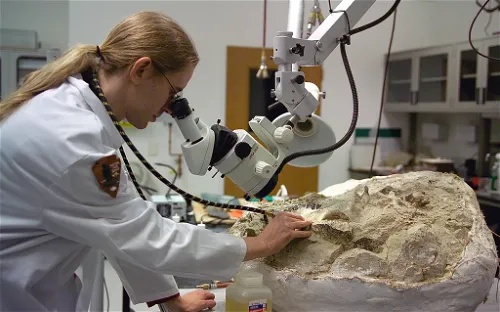Thomas Condon Visitor Center - John Day Fossil Beds National Monument and its collection
The John Day Fossil Beds National Monument is a significant paleontological site located in Oregon, United States. It has been recognized and protected as a national monument since 1974. The site is named after John Day, a trapper who was part of the Astor expedition. This site is a testament to the rich history and geological significance of the region.
Fossil Richness of the Park
The park is renowned for its well-preserved layers of fossil plants and mammals. These fossils provide a glimpse into the life that existed in the region between the end of the Eocene, about 45 million years ago, and the end of the Miocene, about 5 million years ago. This makes the park a fascinating destination for those interested in paleontology and the history of life on Earth.
Geographical Features of the Park
Covering an area of 56 km², the John Day Fossil Beds National Monument is divided into three distinct units – Sheep Rock, Painted Hills and Clarno. These units are located in the John Day River basin in central-eastern Oregon. Each unit offers unique geological features and landscapes, making the park a diverse and interesting place to visit.
Nature & Natural History Geology Animals Plants
#1 Free museums in Oregon #4 Nature & Natural History in Oregon #4 Animal museums in Oregon #1 Geology museums in Oregon #2 Plant museums in Oregon #183 Free museums in United States #189 Nature & Natural History in United States #123 Animal museums in United States #42 Geology museums in United States #41 Plant museums in United States

